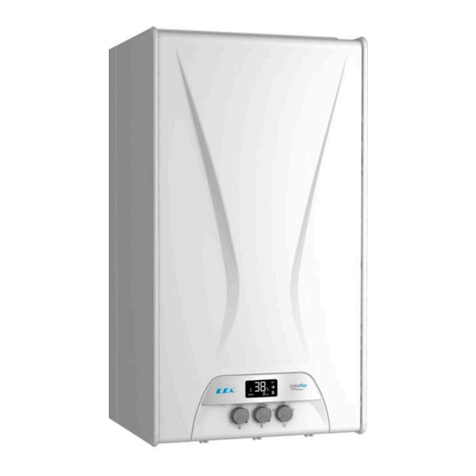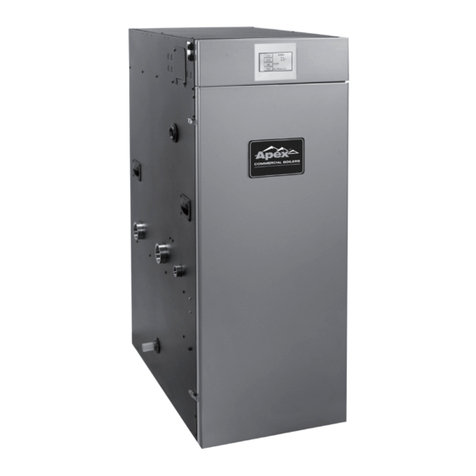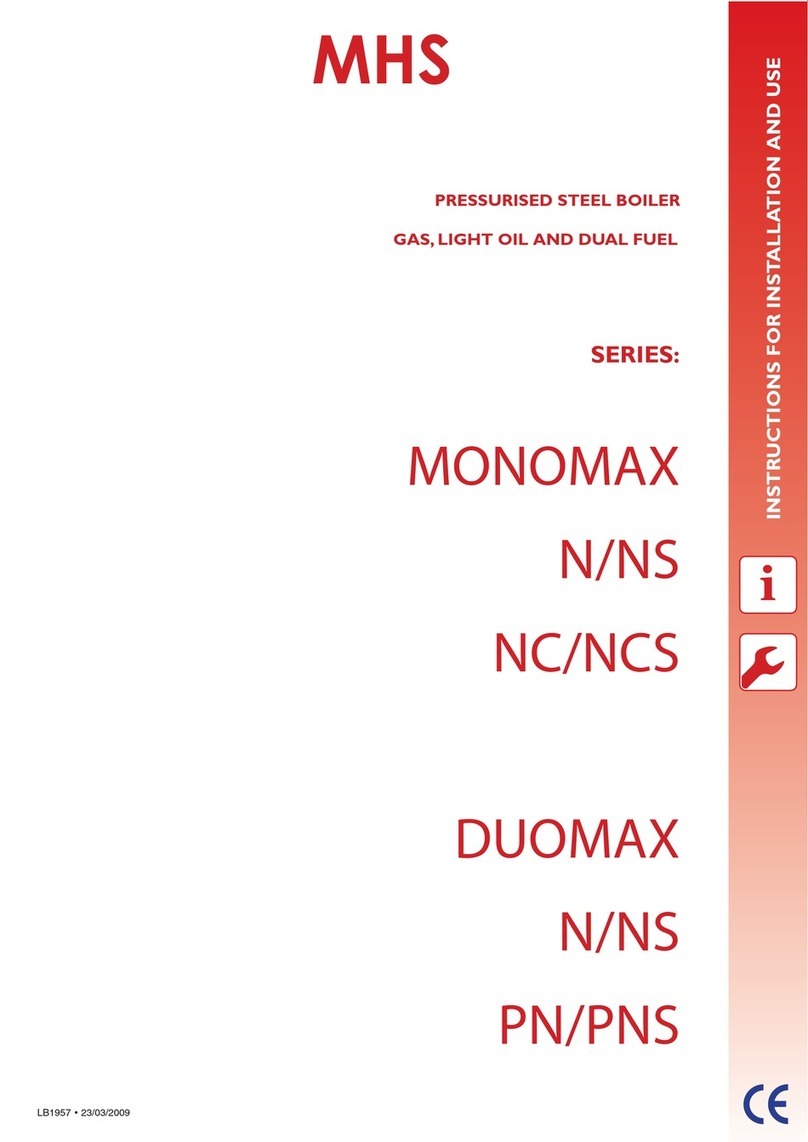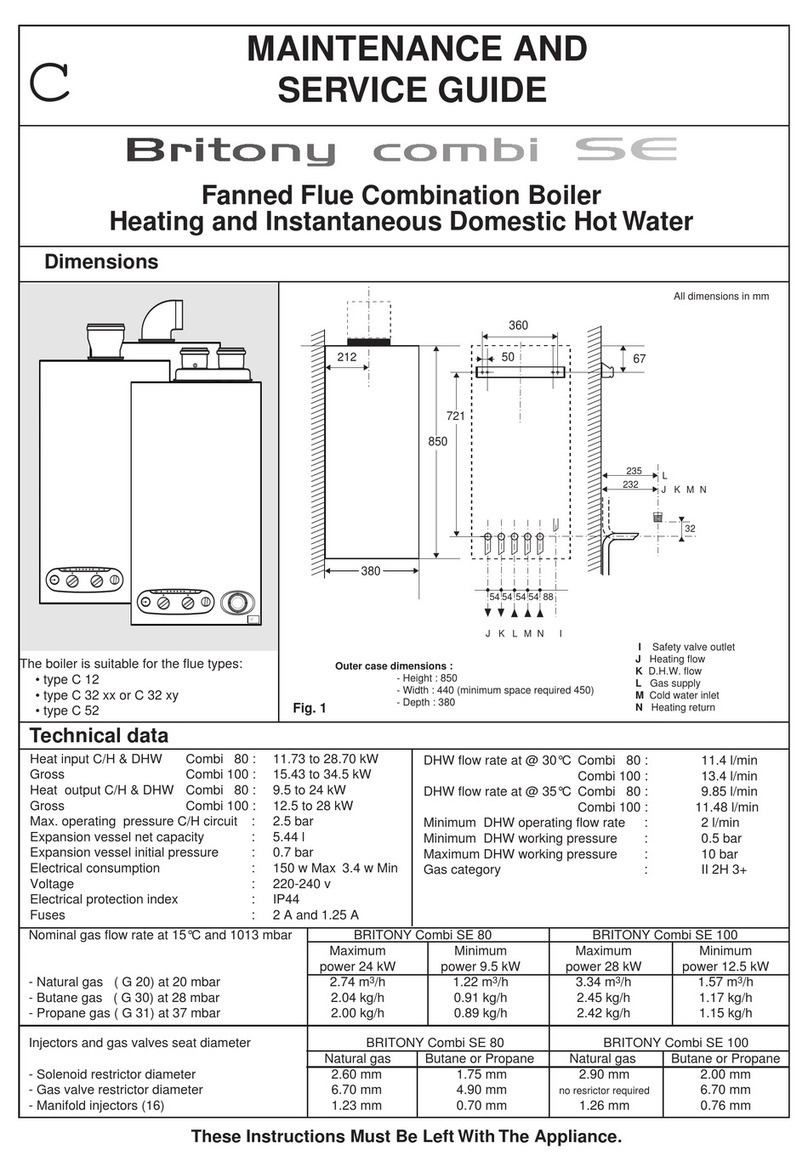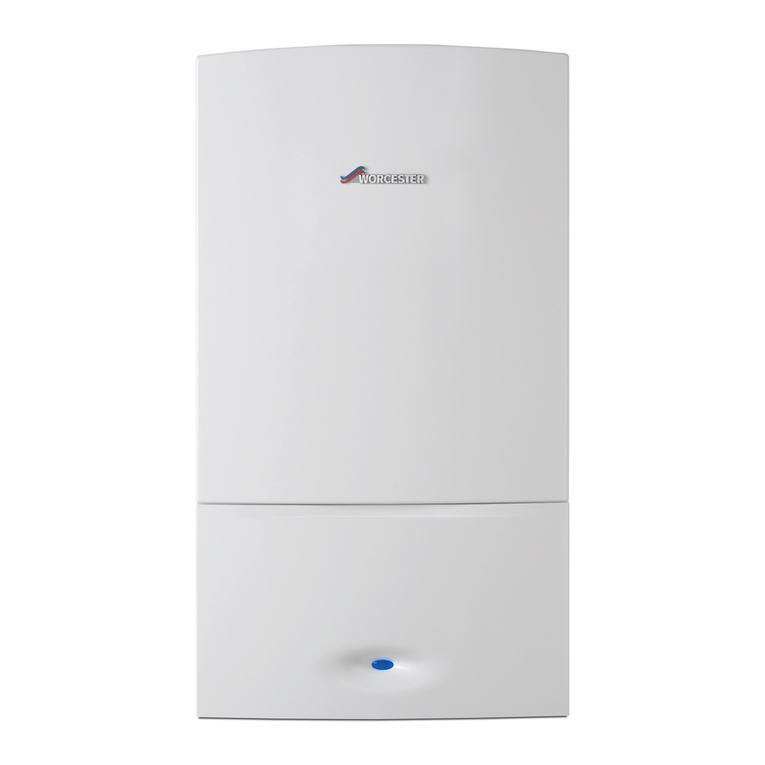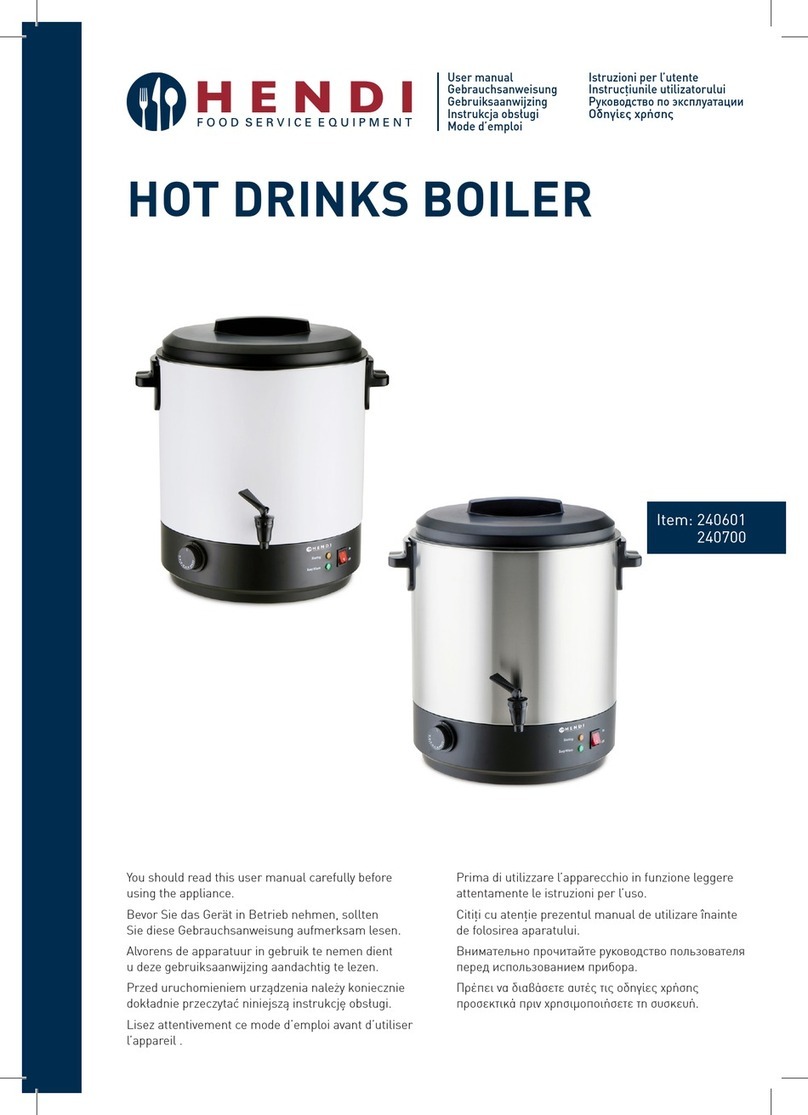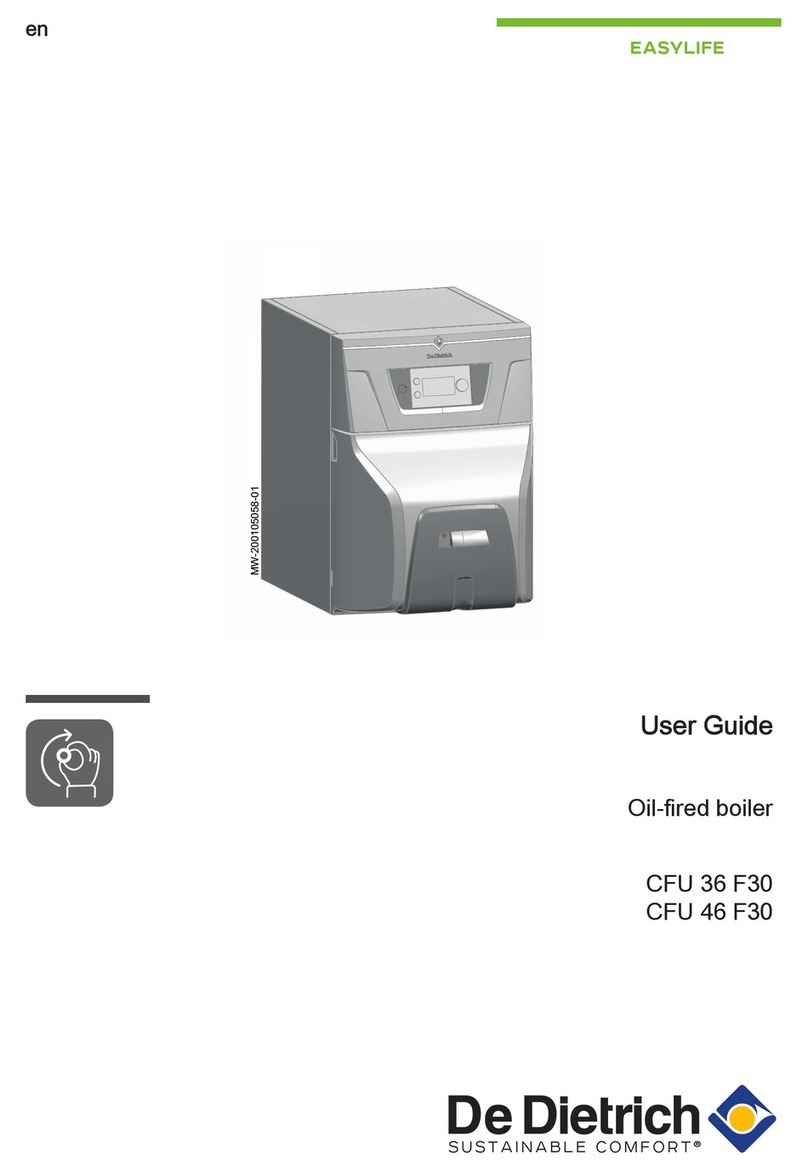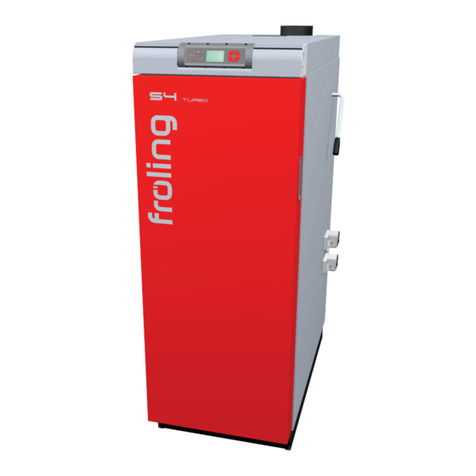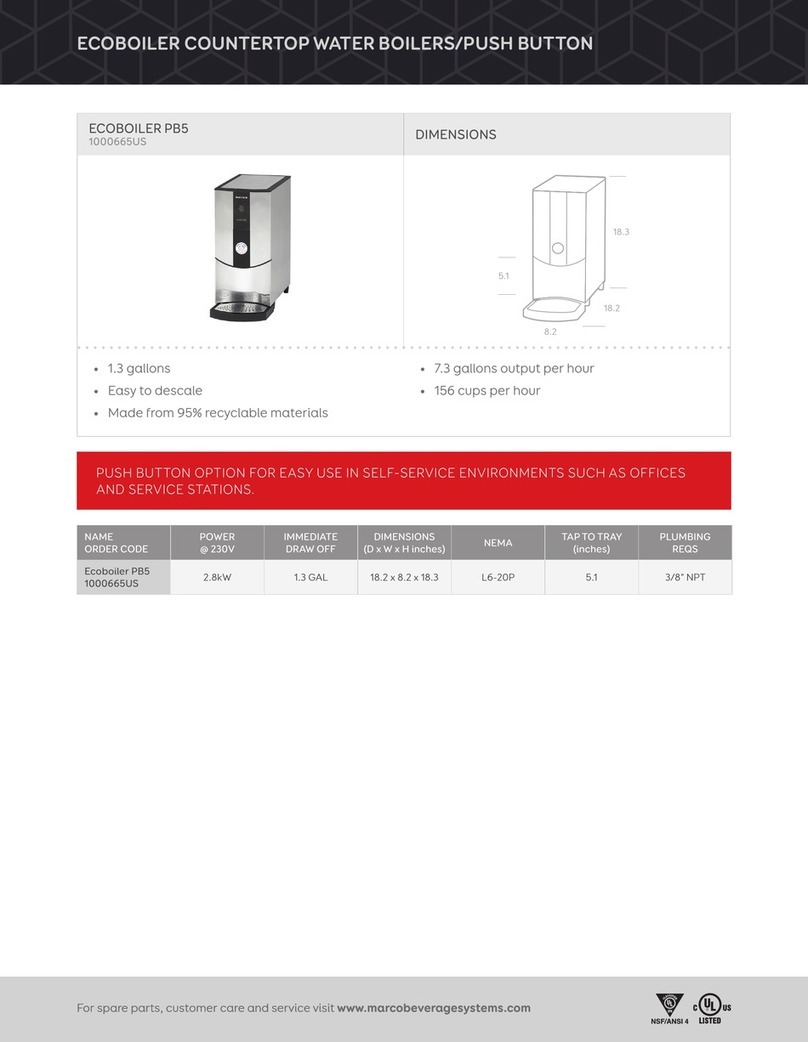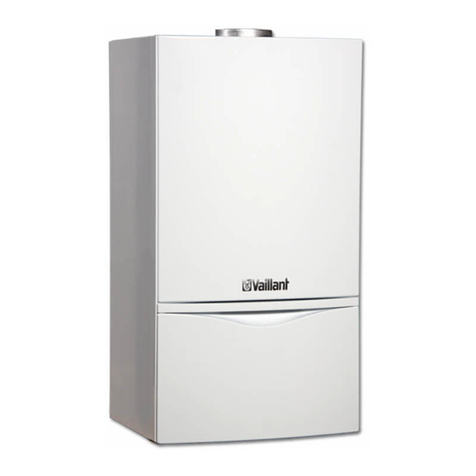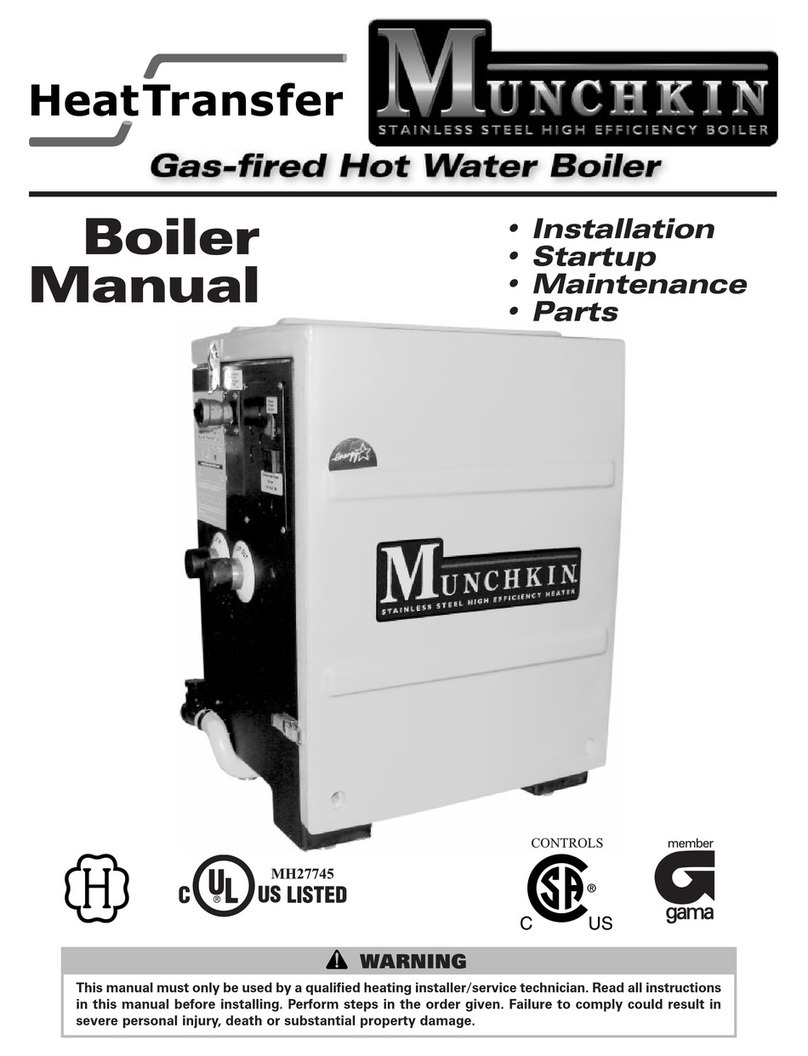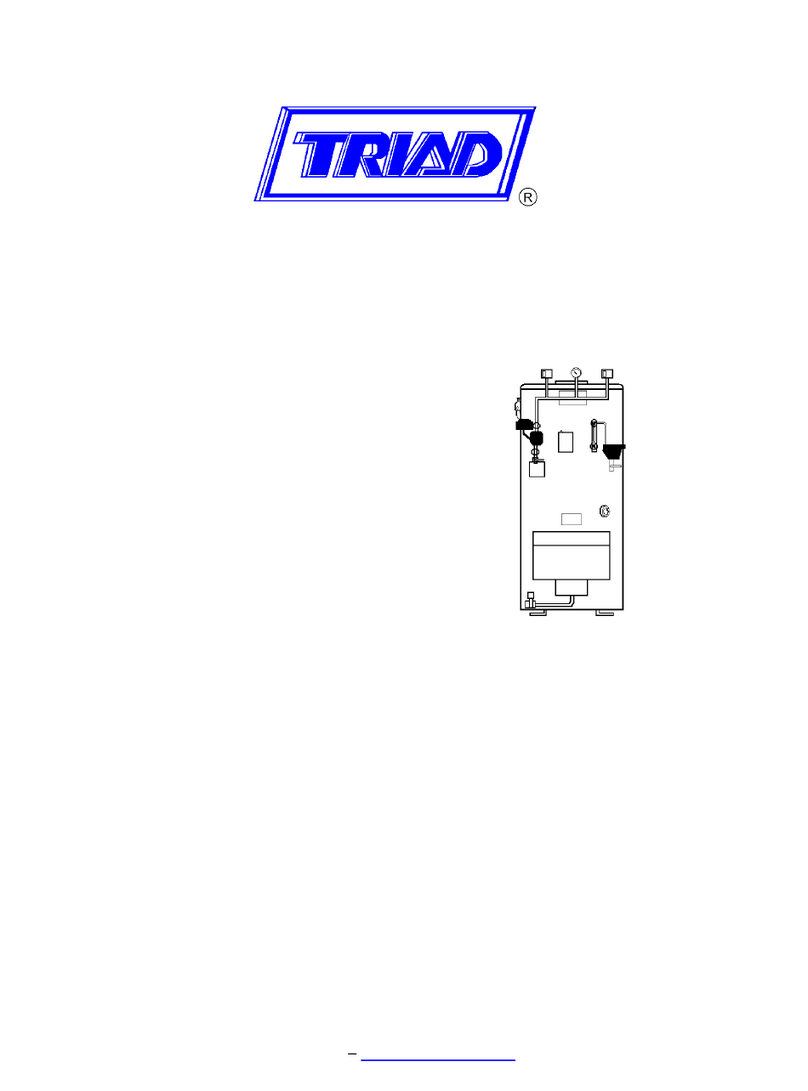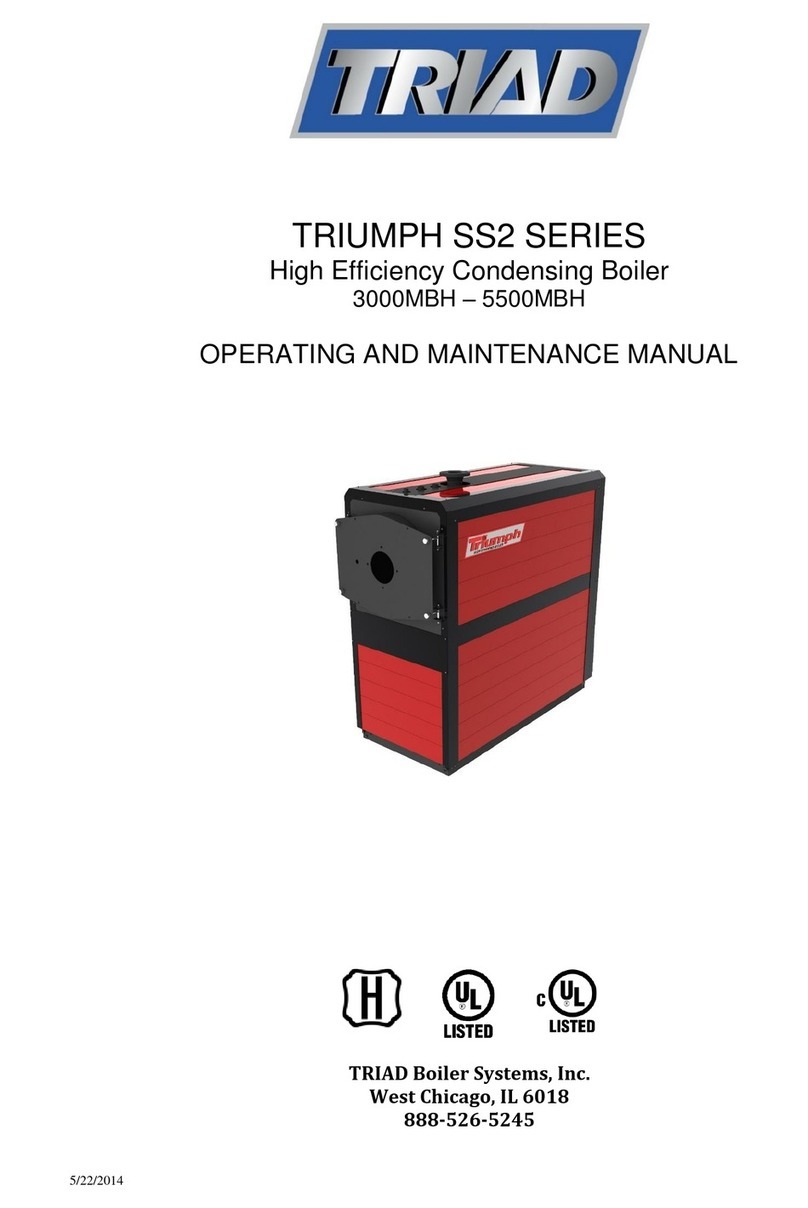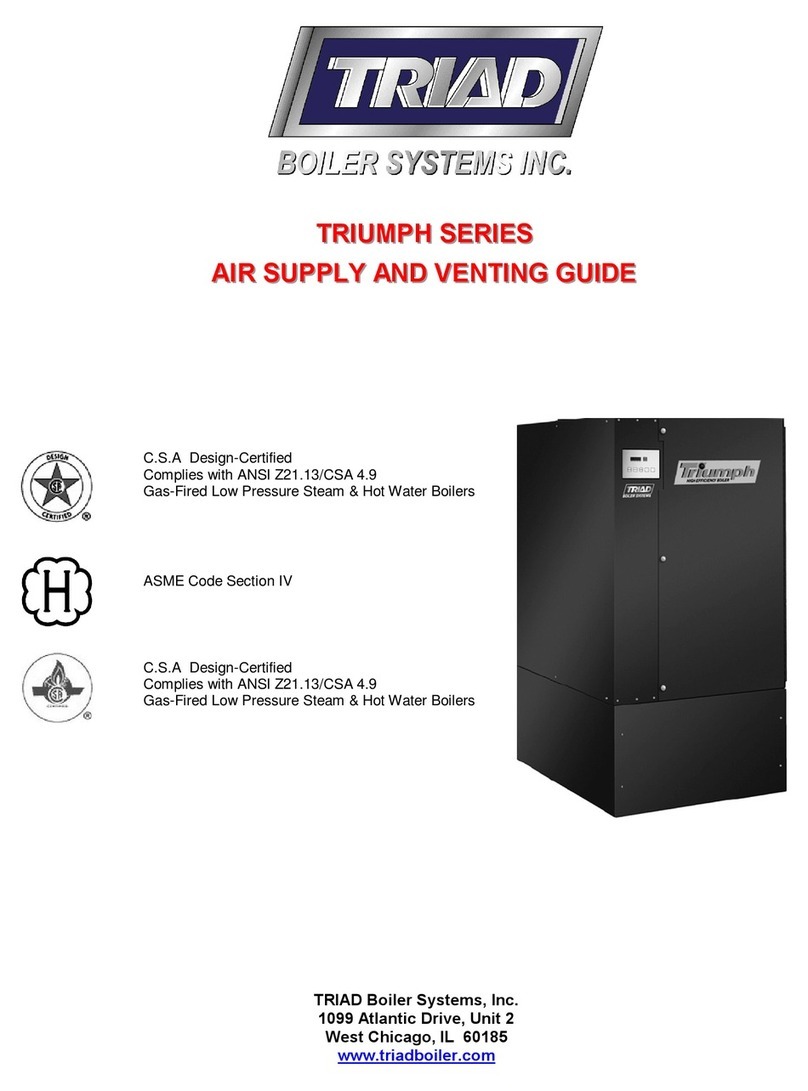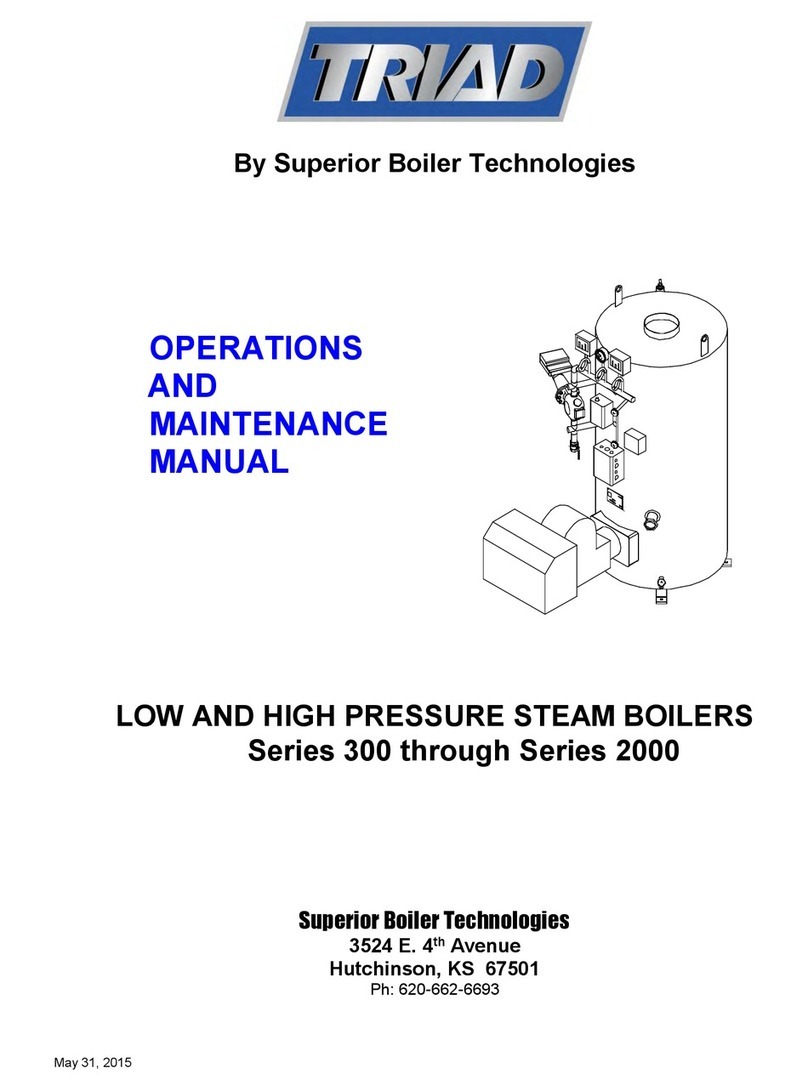
T
TR
RI
IU
UM
MP
PH
H
S
Se
er
ri
ie
es
s
G
Ga
as
s-
-F
Fi
ir
re
ed
d
B
Bo
oi
il
le
er
r
I
In
ns
st
ta
al
ll
la
at
ti
io
on
n
Triad Boiler Systems, Inc –TRIUMPH Series Hot Water Boiler Page 8
An external electrical disconnect (not supplied
with the boiler) with adequate overload protection
is required. The boiler must be grounded in
accordance with local codes or in the absence of
such requirements, in the U.S. with National
Electrical Codes, ANSI/NFPA No. 70 latest
edition and in Canada to the current Canadian
Electrical Code, Part I, CSA C22.1.
Note: A dedicated earth ground (green wire) is
required to avoid nuisance shutdowns. Do not
ground through the conduit. Make sure that
proper polarity is maintained.
Note: Refer to Terminal Block Assignments
(Section 6.1.1).
Electrical Connections at Rear of Boiler
3.5 COMBUSTION AIR
Combustion air must be free from dust, lint, etc.
The presence of such materials in the air supplied
to the burner could cause nuisance "Low Air"
shutdowns, reduced capacity, or premature
burner failure. The boiler should not be operated
during construction while the possibility of drywall
dust, demolition dust, etc. exists.
The combustion air supply must be completely
free of chemical fumes which may be corrosive
when burned in the boiler. Common chemicals
which must be avoided are fluorocarbons and
other halogenated compounds, most commonly
present as refrigerants or solvents, such as freon,
trichlorethylene, perchlorethylene, chlorine, etc.
These chemicals, when burned, form acids which
quickly attack the boiler and the boiler stack.
The result is improper combustion and
premature boiler failure.
Provisions for combustion and ventilation air
must be in accordance with Section 5.3, Air for
Combustion and Ventilation, of the National Fuel
Gas Code, ANSI Z223.1, latest edition, or
applicable provisions of the local building codes.
In Canada, combustion air openings shall
comply with CSA B.149 Installation Code. The
formula is 1 sq. in. per 1,000 Btu/hr of gas input
not less than 100 sq. in. The location shall be
neither more than 18", nor less than 6" above
the floor level.
The boiler room shall be provided with two
openings to ensure adequate combustion air
and proper ventilation. One opening should be 6
to 12 inches above the floor and the other 6 to
12 inches below the ceiling, preferably on
opposite walls. The size of each opening is
determined by whether air is taken from inside or
outside the building. In Canada, ventilation air
openings shall be at least 10% of the cross
sectional area required for combustion air, but
not less than 10 square inches. It is to be
located at the highest practical point
communicating with outdoors.
WARNING!
Under no circumstances shall the boiler room
ever be under a negative pressure. Particular
care should be taken when exhaust fans,
compressors, air-handling units or other
equipment may rob air from the boiler.
3.5.1 Air Inlet Requirements
If air is taken directly from outside the building,
each opening (minimum of two) should have a
net free area of 1 square inch for each 4,000 Btu
per hour of total boiler input. For instance, 112.5
square inches are required for 450,000 Btu per
hour input.
When air is taken from the outdoors through a
vertical duct, 1 square inch per 4,000 Btu per
hour is required. If a horizontal duct is used, 1
square inch per 2,000 Btu per hour is required,
Low Voltage
Control Junction
Box
120 Volt
Electrical Control
Junction Box




















